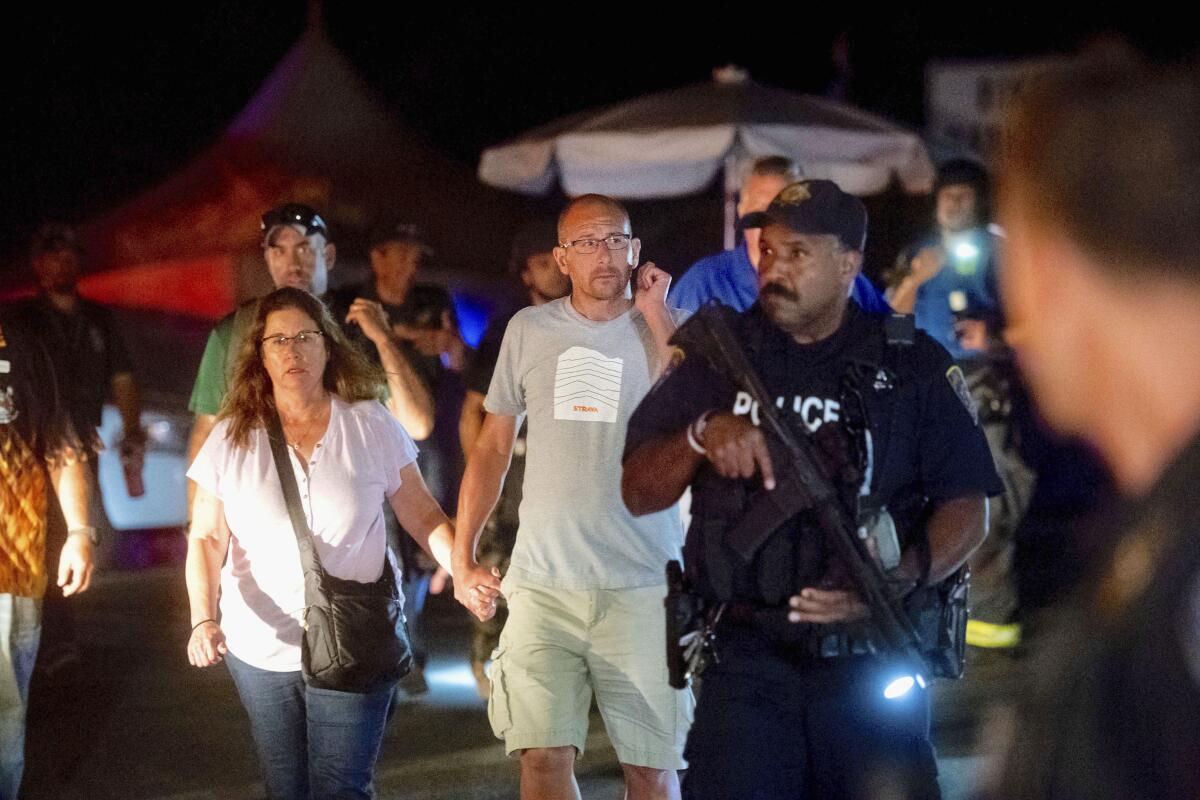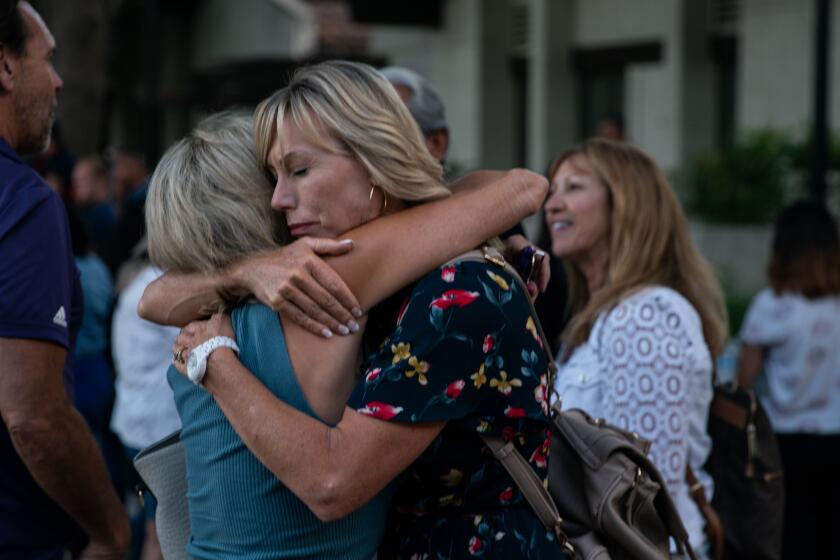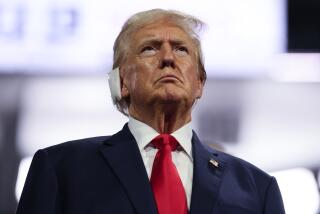Op-Ed: How do we reduce gun violence? By treating it like a disease

- Share via
This summer, U.S. cities have experienced unconscionable spikes in gun violence.
Just this past weekend 12 people were shot, one fatally, in Brooklyn, and a mass shooting in Gilroy, Calif., left three dead. In early June, Chicago witnessed 52 shootings during a single weekend, including 10 fatalities. In Washington, D.C., 19 people were shot in five days, including 11-year-old Karon Brown, killed in a car on the way to football practice. Nine people were shot during one eight-hour period in Baltimore this month. Even in Boston, which sees lower levels of gun violence than most major U.S. cities, at least 19 people have been shot since July 3, and the city’s non-fatal gun injuries have risen by nearly 20% since 2018.
After the recent spate of Boston shootings, Mayor Marty Walsh touted the state’s strong gun laws even as he lamented the city’s levels of violence: “You still have a weekend like this. And it makes you think, God, what more can you do? But there has to be more.”
There is.
To truly address gun violence, we need to view it through a public health lens — one that reframes the issue as a preventable disease that can be cured with the help of all community members.
This disease-control approach to gun violence is an effective one. Cure Violence, for example, a Chicago-based NGO, uses a public health perspective to help cities around the world reduce their gun violence levels. Under its model, outbreaks of violent behavior are responded to with three common epidemic-control methods: interrupting transmission, containing the risk and changing community norms. Cities that have applied these methods have seen as much as 73% drops in shootings and killings.
All our stories of Gilroy Garlic Festival shooting in one place
So what would this approach look like writ large?
First, American cities will need to invest more resources in evidence-based conflict diffusion. In the 1990s, Boston launched Operation Ceasefire, a “focused deterrence” model developed by David Kennedy at the Harvard Kennedy School that advocated for direct communications between police, gang members, clergy and other community members and led to a 63% reduction in youth homicides. This intervention model has since been adopted in American cities like Oakland to great effect. In his new book, “Bleeding Out,” researcher and Harvard Kennedy fellow Thomas Abt concludes that “focused deterrence had the strongest and most consistent anti-violence effects.”
Yet such prevention efforts in American cities are poorly and sporadically funded. A dearth of federal research dollars for violence prevention has slowed progress in implementing prevention programs, in part owing to a lack of big data. Still, we are slowly starting to see more cities and states invest major dollars in gun violence prevention programs.
Funding needs to remain consistent, however. In cities that have continued and expanded their investments in focused deterrence, the gains have lasted. In Oakland, for example, the number of gun deaths has been halved since 2012. But in Philadelphia, where the Focused Deterrence approach was piloted to positive effect, funding has stayed flat, the program has not been able to expand and gun violence is once again on the rise. Proven intervention programs need not only to be implemented but maintained and expanded — something that can ultimately save taxpayers money on expensive medical care and incarceration.
There’s a role for individual residents, too. Those concerned about gun violence — which should be all of us — can support local organizations that work with their city’s highest-risk residents. In Boston, for example, InnerCity Weightlifting partners with some of the city’s most at-risk boys and men, providing them with social and economic capital through career tracks in personal training. My Brother’s Keeper Alliance, an initiative founded by President Obama, provides mentorship to high-risk boys of color. Operation LIPSTICK works with women in local high-crime areas to help them avoid the trap of straw purchasing. And the National Network of Hospital-Based Violence-Intervention Programs supports prevention work in hospitals and trauma centers. Prioritizing donations to any of these initiatives would help those most disproportionately affected by gun violence.
Finally, we should all work to change our community norms around gun violence. Most shooting victims in our cities live in poverty and are people of color; these gun violence inequities make it easier for other city residents to minimize their own threat and for media outlets to deprioritize coverage.
Psychological distance from these shootings does not lessen our responsibility to act. All concerned residents can and should prioritize the safety of their neighbors by fighting against misrepresentations of gun violence victims and perpetrators — including in the media — and learning more about the social injustices and traumas at the root of our cycles of violence. One resource is the Healing Hurt People initiative, developed in part by former Boston City Hospital physician John Rich, which is harnessing digital storytelling to let survivors tell their stories in their own words.
As public health educators and researchers, we firmly believe there is no disease we cannot cure, gun violence included. But no epidemic can be eradicated without the efforts of a village. One’s own sense of safety should never lead to complacency when it comes to shootings in our American cities. Before we read about the next spate of gun violence, let each of us commit to new ways to combat this unacceptable contagion.
Michelle A. Williams is dean of Harvard’s T.H. Chan School of Public Health. Mary T. Bassett is director of the FXB Center for Health and Human Rights at Harvard University and former commissioner of the New York City Department of Health and Mental Hygiene.
More to Read
A cure for the common opinion
Get thought-provoking perspectives with our weekly newsletter.
You may occasionally receive promotional content from the Los Angeles Times.











